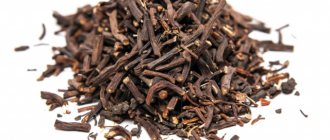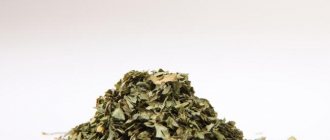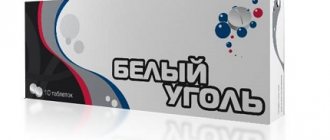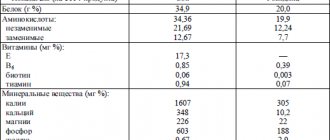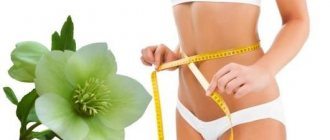Herbal medicine is increasingly gaining popularity. Many believe that it is safe and beneficial for the body. Is it so? For quite a long time, there have been legends about the miracle herb hellebore as a powerful means of losing weight, and wanting to have a figure like the one on the cover, many people became acquainted with this plant. The plant is actively promoted and “moved to the masses” even now. What kind of weed is this? Is it really useful? So, get acquainted with: Caucasian hellebore - uses and contraindications, and all the ins and outs of a natural fat burner.
Caucasian hellebore: photo and description
Content
There is such an old legend. A long time ago, more than two thousand years ago, when the star of Bethlehem lit up in the sky, and the newly born Christ was stirring in the manger, one poor young girl began to sob because she had nothing to bring as a gift to the baby Jesus. And from these tears falling on the white snow, a beautiful flower was born. Some call it the Christmas Rose, but it is better known as “Hellebore” or “Winterberry”.
Legend is legend, but modern botany has studied the “Christmas Rose” (Helleborus) well. Hellebore is a perennial and belongs to the ranunculaceae family. One and a half dozen plant species are known. The herb Caucasian hellebore is one of the most common. Already from the name it is clear that its natural habitat is the Caucasus Mountains. The plant prefers shady places and does not lose succulent foliage all year round. Already in early March, the five-petal cups of flowers, white with a greenish tint, begin to delight with their unassuming beauty. Gardeners love it for this property. Both the hellebore itself and its hybrids are used as an ornamental plant.
Plant characteristics
Caucasian hellebore grass can be found on the edges of oak, fir-spruce and beech forests. The plant thrives at altitudes of up to 1000 m above sea level, so it often grows in gorges and on sloping mountain slopes.
The healing type of hellebore is common in the Caucasus Mountains and is found in the southwestern part of the Krasnodar Territory. The grass can be found almost throughout Georgia, as well as in the Ukrainian Carpathian mountains. It grows along the Black Sea coast, in the foothills of the Kuban. Often, thickets of hellebore can be found along the light bank of a mountain river. The grass is frost-resistant; in mountainous areas it blooms in February-March.
Description
The plant is a perennial herb. It reproduces vegetatively, as well as with the help of fruits, so it often forms something like thickets.
- Root system. Horizontal rhizome with short adventitious roots in the form of cords. The color of the bark is dark brown.
- Stems. Erect, cylindrical in shape, from 30 to 50 cm long. They are peduncles, branching slightly upward. 1-2 flowers grow on one stem. Occasionally small sessile leaves form on the stems.
- Leaves. Two or three evergreen long-petioled leaves form a basal rosette. Palmate dissection forms 5-11 broadly obovate or broadly lanceolate leaves from one leaf. There is a point at the end of each of them.
- Flowers. They bloom up to 4 cm in diameter, the petals are light green with brown or reddish veins.
- Fruit. They are represented by unfused leaflets, with black, smooth, oblong seeds.
Due to its frost resistance and early flowering, the grass is often grown in flower beds in gardens as an ornamental plant.
Procurement of raw materials
The raw materials of Caucasian hellebore used for treatment are dried roots. They are harvested in the fall, after the fruits have completely fallen. Collecting raw materials requires caution, since wet roots can release toxic volatile substances that affect the nervous system and cause headaches, dizziness, and nausea. Even when digging up a plant, it is worth protecting your respiratory system with a carbon respirator. The process of harvesting Caucasian hellebore consists of seven stages.
- Selected adult plants are dug up along with the roots.
- Using scissors, the above-ground part is separated from the root system, and damaged roots or their fragments are removed.
- The collected roots are washed with cool running water.
- The first part of drying involves ventilating the roots in a suspended state from excess moisture in the open air.
- After drying, the roots are laid out in one layer on cotton cloth in a shaded, well-ventilated place.
- When using a dryer, you must adhere to a temperature regime of 40-45°C.
- After complete drying, the raw materials are packaged in plastic bags and hung in a dry, dark, well-ventilated room.
When properly prepared, dried Caucasian hellebore root has a wrinkled surface, a dark brown, matte color and a cream-colored fracture. The smell of the raw materials is specific, unpleasant, and the taste is bitter.
Useful properties and uses of Caucasian hellebore
The plant is popularly classified as medicinal. But it is not officially included in the list of medicinal plants in Russia. By the way, the medicinal properties of Caucasian hellebore were noticed by ancient healers. Hippocrates and his followers considered the herb an excellent cleanser and used it for gout, paralysis, and even dementia. And also, skillfully, and like poison.
It is known that in the 500s BC, when the Greeks were not yet disdainful of civil strife, the small but strategically important coastal town of Kirra was besieged. Its inhabitants stubbornly did not give up, and then the besiegers resorted to a trick: they poisoned the fresh drinking water, having discovered a source leading to the city. And the poison was the hellebore, which grew in abundance near Kirra.
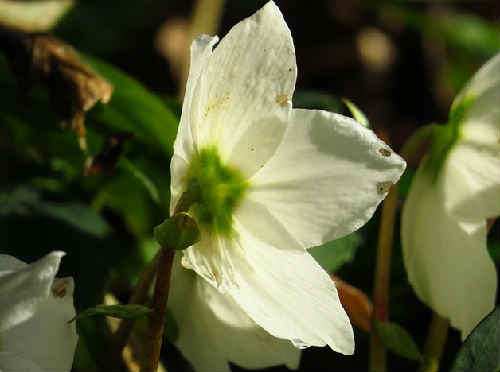
A little later, some couple of hundred years, when the famous Alexander the Great received a serious wound, he listened to the advice of a doctor who prescribed treatment with hellebore. According to some sources, it was the abuse of grass and excess dosage that caused the death of the famous commander.
Beauty that can heal or harm
Only hellebore roots are used as medicinal raw materials.
There are only two options:
- buy ready-made powder;
- prepare it yourself.
The roots must be thoroughly washed, spoiled areas must be discarded, the rhizomes must be cut into thin ones (no thicker than 0.5 centimeters) and dried, and it is better to do this in the usual way, under a canopy. The fact is that when using special dryers, you need to monitor the temperature very carefully: if it is more than forty degrees, the glycosides will simply be destroyed. Then the prepared raw materials need to be ground in a coffee grinder or using a blender.
Store only in closed paper bags or glass jars; do not use plastic containers or plastic bags. The beneficial properties of the powder last for three years.
We recommend reading: Description of loosestrife, medicinal properties and contraindications
Caucasian hellebore - use for weight loss: instructions
You should lose weight on hellebore correctly. You can’t expect a quick effect, but with a reasonable course approach the result is not long in coming: some manage to lose up to 10 kg of excess weight in a month, but the average loss should not exceed 0.5-1 kg per week - this is safe for health and will not stress for the body. How to take hellebore correctly?
Losing weight with hellebore goes smoothly and evenly thanks to the plant’s abilities:
- curb appetite;
- remove toxins, waste, excess fluid from the body;
- influence metabolism, in particular the breakdown of fats.
One should not forget about the laxative and diuretic properties of the plant. The combined use of drugs with similar effects, as well as other pharmaceutical products for weight loss and control, is prohibited. It is excluded to take alcohol and psychotropic drugs in parallel with hellebore. Proper nutrition and moderate physical activity are good companions for hellebore in the matter of transforming your figure.
Don’t be shy, ask our consultants questions, right here on the website. We will definitely answer. Leave commentsGo
DOSES OF HELLEBORE CONSUMPTION
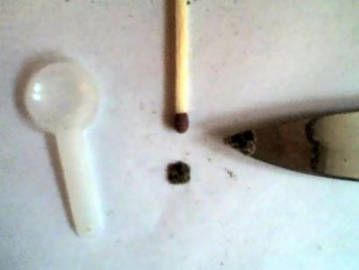
When deciding to try the effect of a plant on yourself, it is important to remember that it is very poisonous in large doses. An overdose leads to severe poisoning, swelling of the tongue and larynx, decline in cardiac activity up to complete cardiac arrest. You need to take hellebore extract strictly according to the instructions, and then you can really normalize your weight without harm to your health.
According to the instructions for use included with hellebore, you should take it for weight loss and cleansing the body according to the following scheme:
| Stages | Duration, days | Quantity, mg |
| 1 | 10 | 50 |
| 2 | 10 | 100 |
| 3 | 10 | 150 |
| 4 | 150 | 200 |
| 5 | 30 | break |

The initial dose of powder is taken the size of a match head. After a few days, if the body behaves normally, the dose can be doubled, which will correspond to 50 mg. As a rule, a measuring spoon is included with the hellebore packaging. Having scooped up the preparation, the excess must be removed with a knife, running along the edges of the spoon, that is, remove the slide. Then pour the powder onto paper and divide into 4 even parts. 1/4 of a measuring spoon is approximately 50 mg.
If exacerbation of chronic diseases occurs while taking the drug, then increasing the dose should be stopped. If you feel unwell, you should immediately stop taking the drug and seek help from a doctor.
To normalize weight, as a rule, one course of taking hellebore for 6 months is enough. If necessary, the course can be repeated after a month break. When taking hellebore again, the initial dosage of 50 mg remains, and its increase occurs every 5 days until it grows to 200 mg per day.
Caucasian hellebore: how to take it, how to drink it correctly
The roots and rhizomes of the plant are used as medicinal raw materials. They are collected after flowering and seed ripening. Caucasian hellebore root has a number of positive properties for the whole body:
- improves digestion;
- normalizes the functioning of the nervous system;
- cleanses blood vessels;
- relieves joint pain;
- has an antitumor effect;
- strengthens the body's defenses.
In order for the properties of Caucasian hellebore to manifest themselves to the maximum, it is important to use it correctly.
Decoctions and infusions
Water decoctions and infusions of hellebore are used internally for diseases such as tuberculosis, pleurisy, pneumonia, and cough. Externally in the form of compresses - for osteochondrosis, gout and rheumatism. To prepare the decoction, take ½ teaspoon of chopped rhizomes and pour 2 cups of boiling water. Next, keep the broth in a water bath for half an hour, set aside, cool and filter through a layer of gauze. For internal use - a teaspoon before meals, no more than three times a day.
Infusions are effective for dermatological problems: eczema, psoriasis, dermatitis, long-term non-healing wounds, etc. Take ¼ teaspoon of crushed rhizomes per glass of boiling water, leave under the lid for a couple of hours and filter. Used as compresses and lotions. Wounds, including purulent ones, are also washed with the infusion.
Caucasian hellebore tincture
Alcohol has the unique ability to extract the maximum of useful biologically active components from plants. Unlike decoctions, valuable compounds are not destroyed in tinctures, since there is no significant thermal effect. Hellebore tincture is used internally for weight loss, cleansing the body, and externally for dermatological problems. For half a liter of 40% alcohol or vodka, take 50 g of Caucasian hellebore rhizomes. The mixture is infused in a dark glass container with a lid for about two weeks. The ideal place is away from sunlight at room temperature. Shake the container periodically. No need to filter! As the tincture is consumed, you can add vodka.
For daily use, half a teaspoon of tincture is enough once; it can be added to tea.
Powder
Hellebore (rhizome) powder is famous for its anti-aging properties. Regular consumption rejuvenates the body, improves immunity, and reduces weight. In this case, oral administration begins with microdoses - no more than half a gram at a time (on the tip of a knife) in the morning on an empty stomach, washed down with clean water. The dose is doubled every 10 days, gradually reaching no more than 30 g per application. The powder is consumed in its pure form once a day, the first meal – 2 hours after treatment.
You can prepare the powder yourself. To do this, dry rhizomes are crushed and stored in a tightly closed container or plastic bag.
Hellebore oil
It is recommended to take the oil extract of Caucasian hellebore rhizomes for the same purposes as the powder. A powerful healing effect is noticeable soon: the functioning of the nervous system is normalized, the functioning of internal organs is improved, and the body is gently and painlessly cleansed of harmful “accumulations.” Apply 10-20 drops under the tongue. Therapy is recommended at least an hour before meals, once a day.
The oil is also used to treat rhinitis and sinusitis: a drop of the product is instilled into the nasal cavity in each passage. Another method of treatment involves rubbing oil into the wings of the nose. The product is also used locally for joint pain - warm oil is gently rubbed into the affected area.
In case of allergic reactions, external use of the oil should be stopped immediately.
METHODS OF ADMINISTRATION

You can take hellebore for weight loss in one of the following ways. The most important thing is that its use is carried out in strictly prescribed doses, otherwise the benefit may turn into harm.
The first way to use this plant for weight loss is to take the infusion in the morning on an empty stomach 3 hours before meals. You can prepare the infusion in the evening, and the amount of water is not of fundamental importance. You need to accurately measure the powder, place it in a glass and simply fill it with boiled water.
You can also prepare an infusion in the morning, but in this case, hellebore powder should be poured with hot water for 20 minutes before taking. It is important to drink all the liquid and sediment as the powder will not dissolve completely.
You can also consume the powder in dry form with plenty of warm water. You should also drink it on an empty stomach and after taking the powder, do not eat for another 30 minutes. If you can’t swallow the dry powder, you can mix it with 1/2 teaspoon of honey and then drink it with water.
Caucasian hellebore: contraindications and harm
Main contraindications for the use of hellebore:
- childhood;
- pregnancy in all trimesters and its planning stage;
- breastfeeding;
- hypertension;
- diseases of the cardiovascular system;
- urolithiasis and kidney pathologies;
- individual intolerance to hellebore.
If you abuse hellebore, you may:
- allergic manifestations;
- increased blood pressure;
- increased heart rate;
- nausea, vomiting, diarrhea;
- during menstruation – increased discharge.
Exceeding the dosage can cause dysfunction of internal organs and a general deterioration in well-being. If you have symptoms of poisoning, you should seek medical help.
Indications
Before using a medicinal plant, you should familiarize yourself with its indications for use and consult your doctor. It is useful to use the plant in the following cases:
- insomnia;
- sleep disturbance;
- gastritis;
- stomach ulcer;
- concussion;
- prostatitis;
- BPH;
- difficulty conceiving;
- warts on the hands and feet;
- presence of helminths;
- headache;
- renal and liver pathologies;
- anemia;
- arthritis;
- cystitis;
- tuberculosis;
- diabetes;
- mastopathy;
- cancer diseases;
- obesity;
- high blood pressure, etc.
Caucasian hellebore: reviews from doctors
Neither the Caucasian hellebore nor other representatives of the plant family are recognized by official medicine. It is unlikely that you will be able to get a positive review from a specialist, unless, of course, he is passionate about traditional medicine.
But you can still find doctors’ opinions on the negative consequences of uncontrolled use of hellebore. Experts urge you not to self-medicate, and to remember that herbal medicine is not as harmless as it may seem to a person with little knowledge of it, and the cute light flowers peeking out from under the snow in early spring can cause harm to the body, sometimes irreparable.
The principle of action of hellebore herb
It may seem strange that not only folk, but also traditional medicine suggests using poisonous hellebore as a means of losing weight. What is its mechanism of action? You should not expect that after using a medicinal herb you will notice how quickly the fat layer will begin to burn.
In fact, weight loss occurs due to the laxative effect of the plant. Due to regular use, the body is cleansed of excess fluid and the intestines are freed from impurities that have accumulated on it for years.
The main advantage of hellebore is its mild laxative effect, which is due to the low concentration of active substances (large dosages are prohibited due to the presence of poison contained in the roots). This allows you to lose weight safely, but at the same time, the weight loss process is extended over a long period, for example, from 2 weeks to a year (the recommended course duration is 12 months). In this case, in the first month you will be able to lose 4-6 kg, and in the following days you will only be able to maintain the result.
Systematic use of medicinal herbs helps to lose excess weight and improves overall well-being, thanks to its rich chemical composition, namely:
- fatty oils - have a restorative effect;
- steroid saponins - ease breathing and asthma;
- alkaloids - improve blood circulation and relieve pain;
- cardiac glycosides corelborins - have a positive effect on cardiac activity;
- anthraglycosides - thanks to them, the herb has a laxative effect, irritating the intestinal walls;
- coumarins - has antiviral, antioxidant, soothing, antibacterial and antifungal effects;
- vitamin E - prevents oxidation and destruction of cell membranes, keeps cells young and healthy, and is an excellent prevention of cancer;
- vitamin D - helps restore immunity, prevents the development of age-related dementia;
- flavonoids - have a vascular strengthening, antioxidant, antiallergic, and decongestant effect.
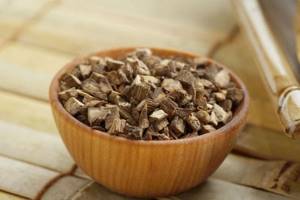
You can take hellebore only strictly according to the recommended dosage
Caucasian hellebore: price in pharmacies
If you want to buy Caucasian hellebore in a pharmacy in its pure form, it is unlikely that you will succeed. Licensed drug sales points do not sell raw materials. However, it is possible to purchase herbs (it is possible that they are fake) in online pharmacies or from private suppliers, in departments selling dietary supplements and herbal preparations.
On the forums of traditional medicine connoisseurs, it is quite easy to find user links to supposedly trusted manufacturers selling hellebore. However, it is difficult to verify their authenticity. Ideally, it would be good to prepare the plant yourself, but due to the limited natural habitat, this is difficult to do. We can only hope for the integrity of the implementers and our own luck.
The healing and at the same time dangerous Caucasian hellebore is an amazing plant, its use and contraindications are extremely individual. Thanks to it, you can prolong youth and beauty, improve your well-being. And with the right and reasonable approach, he is capable of working real miracles. However, in pursuit of a beautiful figure and getting rid of diseases, it is worth remembering: we ourselves are responsible for our own health. Take care of him!
What is the value
Hellebore is a unique plant that can have a healing effect on the human body. This is due to the high content of biological active substances of different nature and their therapeutic effect.
- Cardiac glycosides. The Caucasian hellebore contains the glycoside corelborin K. It has a tonic effect on the myocardium, regulates arterial and venous pressure, increases the strength of heart contractions, normalizes the functioning of the conduction system of the heart, improves peripheral blood flow, providing tissues with sufficient oxygen supply.
- Complex of steroidal saponins. It has an anti-inflammatory effect, regulates hormone production, increases the speed and quality of the immune response. Normalizes electrolyte metabolism, improves bronchial secretion, has an expectorant effect due to stimulation of the cough center in the medulla oblongata.
- Fatty vegetable oils. They participate in regeneration processes, stimulate cell renewal, and neutralize the effects of carcinogens on the human body.
- Alkaloid compounds. They exhibit anti-inflammatory, analgesic and antispasmodic effects. They have a mild hypotensive effect and normalize the functioning of the central nervous system. In small doses the effect is sedative, in large doses it is tonic.
- Anthraglycosides. Natural laxatives that cleanse the intestines by gently irritating its walls. They have a mild choleretic and diuretic effect. Removes waste and fecal stones.
- Flavonoids. Normalize heart rate, permeability of vascular walls and peripheral blood flow speed.
- Coumarins. They have an antitumor effect by inhibiting the activity of atypical cells, normalize heart rhythm, and have antioxidant properties.
- Vitamins A, C, D, E. Act as natural antioxidants, help normalize metabolic processes, and regulate the production of hormones.
The most active chemical substance in Caucasian hellebore is considered to be corelborin K. It is recognized by the world of science as one of the strongest natural cardiac glycosides. This substance serves as the active ingredient of the drug "Korelborin". Qualitatively differs from other cardiac glycosides in its ability to retain its effect when taken orally, while all others are inactivated by gastric juice. The strength of the glycoside is superior to that extracted from lily of the valley and is not inferior to strophanthin. The toxicity of corelborine is considered moderate. In terms of its ability to accumulate, hellebore is considered an analogue of foxglove.
Contraindications
In certain cases, you should refrain from using the plant. Contraindications are:
- pregnancy;
- ischemia;
- gallstones;
- individual intolerance;
- hypersensitivity to glycosides;
- breast-feeding;
- extrasystolic arrhythmia;
- myocardial infarction;
- atrioventricular block;
- endocarditis;
- paroxysmal tachycardia;
- high sensitivity to cardiac glycosides.
